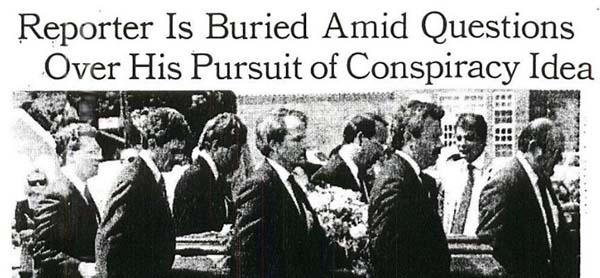
Was a devil-may-care investigative reporter murdered by U.S. intelligence and made to look like suicide in order to cover up an international conspiracy of spooks, spies and con men with embarrassing connections to the Reagan White House—the malign effects of which are still resonating today?
On the morning of August 10, 1991, a freelance journalist by the name of Danny Casolaro was found dead—wrists slashed—in a Martinsburg, West Virginia, motel.
Although his death was ruled a suicide his demise has inspired JFK-style speculation and has attracted a devoted following of mainstream journalists, citizen-reporters and the requisite bevy of conspiracy mongers.
They are all united in a belief that in some form or fashion his poking/prodding into dark places—and friendships with some very shady characters—may have hastened his departure from this mortal soil.

A nosy and inquisitive man by predilection and passion, Casolaro had been investigating what he claimed was a scandal of Watergate proportions, one with tentacles wrapped around such sordid affairs as Iran-Contra, the “October Surprise” and the Bank of Credit and Commerce International.
While many of these scandals have gathered cobwebs, a forensic examination of how they came about has resonance—and repercussions—for events currently transpiring. Casolaro believed he was close to identifying—beyond a reasonable doubt—the connective tissue that bound these scandals together (with hooks to the Reagan White House).[1]
Stumbling on a Netherworld of Spies and Corruption
Danny Casolaro was a dilettante of sorts, one of six children born into a well-off McLean, Virginia, family (his father was a well-respected obstetrician).
His interests were weirdly varied and diverse: from amateur boxing and Arabian horses to poetry and journalism. He was a budding novelist and romantic and, by all accounts, a ladies’ man.
But an early interest in the computer business—evinced by his acquisition of Computer Age Publications in the 1980s—was the impetus that led him into a rabbit hole populated by spooks, spies and con men.
An on-going Federal court case involving a seemingly innocuous bit of software called PROMIS (short for Prosecutor’s Management Information System) was what caught his attention.
Developed in the 1970s by a California-based company—Inslaw—it provided a solution to a perennial problem faced by the Department of Justice: how to easily and efficiently keep track of court cases, and the whereabouts of defendants, lawyers and witnesses at any given time.
PROMIS promised to do just that and an initial contract for $10 million was awarded to Inslaw in March 1982 to install the software in a few selected U.S. Attorney’s offices around the country.
However, contract disputes arose over the nature of enhancements made to the original program and how they should be paid for. Bill and Nancy Hamilton—the founders of Inslaw—soon began to feel the financial pinch of payments withheld by DOJ and, by February 1985, the dispute wound up in a D.C. court with Inslaw filing for Chapter 11 bankruptcy protection.
DOJ lawyers entered the case arguing that Chapter 11 (re-organization) should be converted to a Chapter 7, which would force the company to sell off corporate assets, namely, PROMIS.
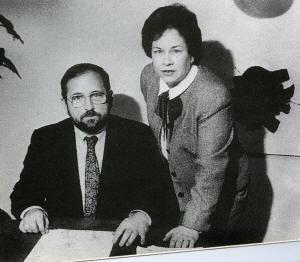
The Hamiltons smelled a rat. Information began turning up pointing to a cabal of senior government officials—including Reagan’s first Attorney General, Ed Meese (formerly, a Nixon AG as well)—who were involved in a plot to sell PROMIS to intelligence agencies around the world (and pocket the profits).
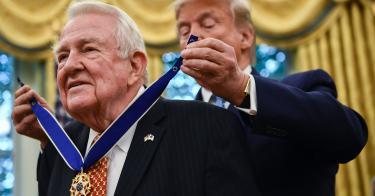
![The INSLAW Affair: Investigative Report by The Committee on The Judiciary Together With Dissenting and Separate Views by [102nd Congress House Judiciary Committee]](https://covertactionmagazine.com/wp-content/uploads/2021/10/the-inslaw-affair-investigative-report-by-the-com.jpeg)
The evidence was compelling enough to convince a D.C. Bankruptcy Court, in February 1988, to award the company $6.8 million in damages and $1.2 million in attorneys’ fees.
Judge George Bason opined in his written decision that DOJ “took, converted, stole” software “through trickery, fraud and deceit” and that the agency “unlawfully, intentionally and willfully sought to turn the filing into a Chapter 7 liquidation case.”
Despite fuming and fussing by DOJ officials, Judge Bason’s decision was upheld by a federal district court. So, pray tell, what was behind DOJ’s attempt to steal PROMIS?
Whistleblower Tells All
The alleged answer came via a shady type, Michael Riconosciuto, described by Ron Rosenbaum, in his 1991 Vanity Fair piece about Casolaro, as a “rogue scientist/weapons designer/platinum miner/alleged crystal-meth manufacturer.”
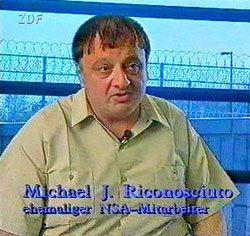
Riconosciuto was sketchy, yes, but his background was indeed colorful. He painted himself as a self-taught computer genius and claimed to know the PROMIS back-story and, by extension, why it was so desirable.
The tale he told the Hamiltons was—in Hollywood lingo—Area 51 meets Breaking Bad. Riconosciuto laid out the narrative like this: hired, ostensibly, to oversee a weapons design project, he was given the task of putting a “back door” into the enhanced PROMIS software in order to spy on those who put the software to use.
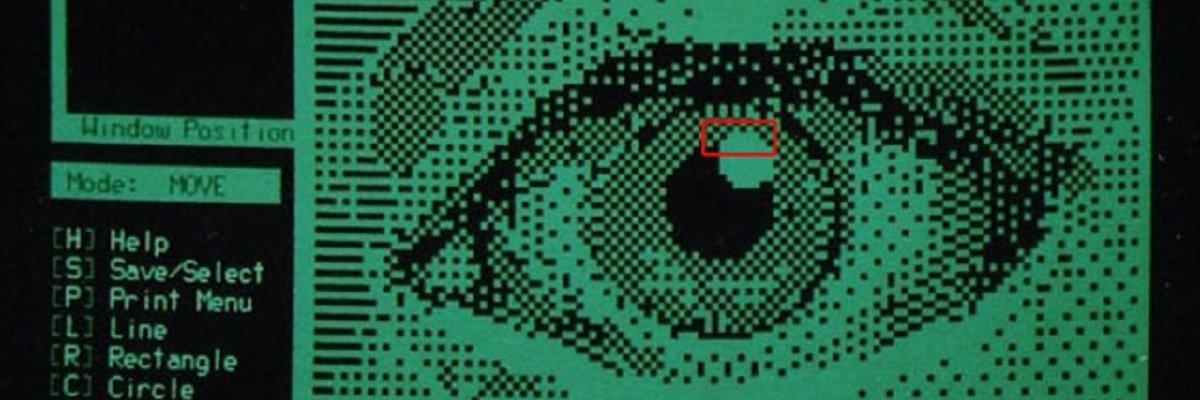
All the work was carried out at a small Indian Reservation—owned by the Cabazon Tribe—near Indio, California. Despite having only 24 members the reservation still held federal Sovereign State status where, as a result, work could be carried on away from prying eyes and with minimum interference (or so they thought). And what sort of work was done?
A grab bag according to Riconosciuto that involved everything from weapons development to global arms sales. Visitors from countries in conflict—like Nicaragua—would pay visits (Eden Pastora a/k/a anti-Sandinista Commander “Zero” was identified as one of the arms shoppers).
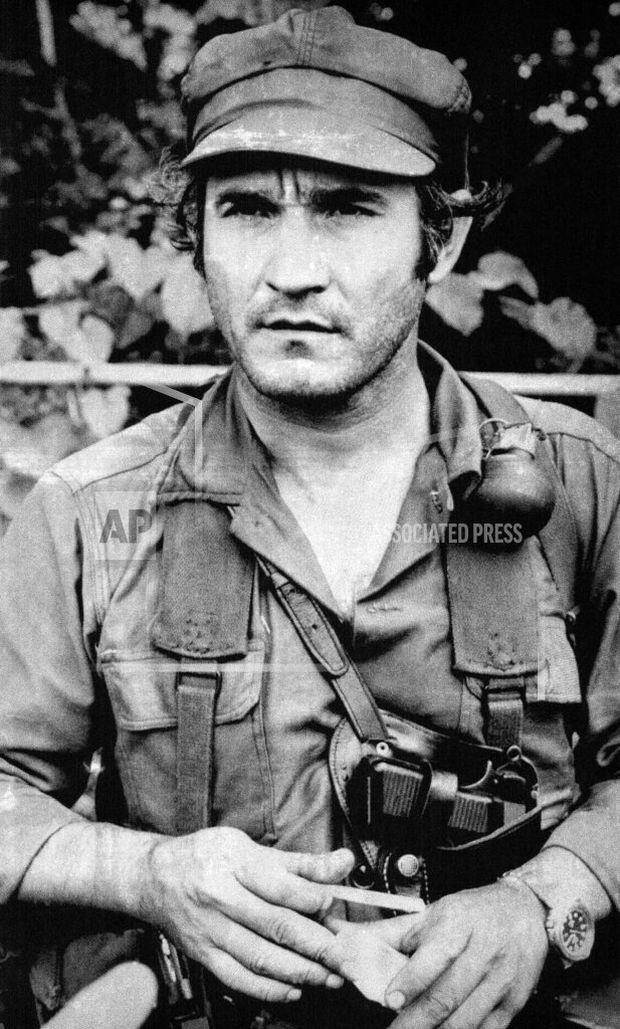
It seems an “enhanced” PROMIS software offered unlimited possibilities to spy on the spies via the installed back door but, also, to do the same with financial institutions which, allegedly, were also customers.
It was a covert operative’s dream come true and the money gleaned from the sales of the Cabazon war-stuff was placed into a money-laundering slush fund held by Bank of Credit and Commerce International and doled out to operatives carrying out dirty tricks on behalf of U.S. Intelligence agencies.
A bunch of politically connected types made the original cash deal with the Cabazon tribe. These included Dr. John Philip Nichols—ex-CIA and confidante of Reagan and Meese—who was appointed Tribal Administrator, effectively running the tribe’s affairs.
And there was Earl Brian, a director of Hadron, Inc.—Inslaw’s chief competitor and another Reagan/Meese confidante.
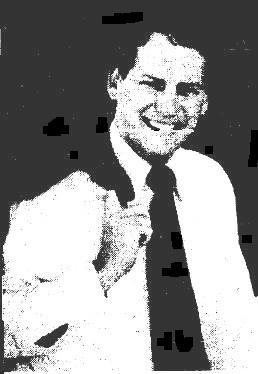
Then there was the Wackenhut Corporation, now known as G4S, which added yet another dimension to the Cabazon drama. Founded by hard-line anti-Communist George Wackenhut in 1952, the company had become a major defense contractor and favorite of the CIA, employing many of its former operatives.
It also boasted the largest private database of “left-leaning subversives,” claiming, in 1965, that its files included information on some 2.5 million Americans.
John Connolly, NYPD detective turned investigative reporter, mused sarcastically about Wackenhut in a 1992, Spy Magazine piece entitled “Inside the Shadow CIA, What?” The author wrote: “A big private company—one with a board of former CIA, FBI and Pentagon officials, one in charge of protecting Nuclear Weapons facilities, nuclear reactors, the Alaskan oil pipeline and more than a dozen American embassies abroad, one with long-standing ties to radical right organizations; one with 30,000 men and women under arms—secretly helped IRAQ in its effort to obtain sophisticated weapons? And fueled unrest in Venezuela? This is all the plot of a new best-selling thriller, right? Or the ravings of some overheated conspiracy buff, right? WRONG!”

Wackenhut was, in effect, carrying out covert activities worldwide with the imprimatur of the CIA. Riconosciuto claimed he was involved with Wackenhut in developing and manufacturing a whole host of military weaponry at Cabazon that included night-vision goggles, machine guns and both biological and chemical weapons for export.
In addition, he puffed up and bragged that he had invented a deadly fuel-air explosive. PROMIS, according to Riconosciuto, found intelligence agencies/secret police cuing up for a chance to buy a copy of the software with Hadron’s Dr. Brian concluding deals with Canada, Israel, Kuwait and Egypt, among others.
One witness to the sale of PROMIS to Israeli intelligence was Ari Ben-Menashe, a former Mossad agent and international arms dealer. Ben-Menashe—an Iranian-born Israeli-Canadian—had a checkered past with involvement in scandals including the “October Surprise.”[2]
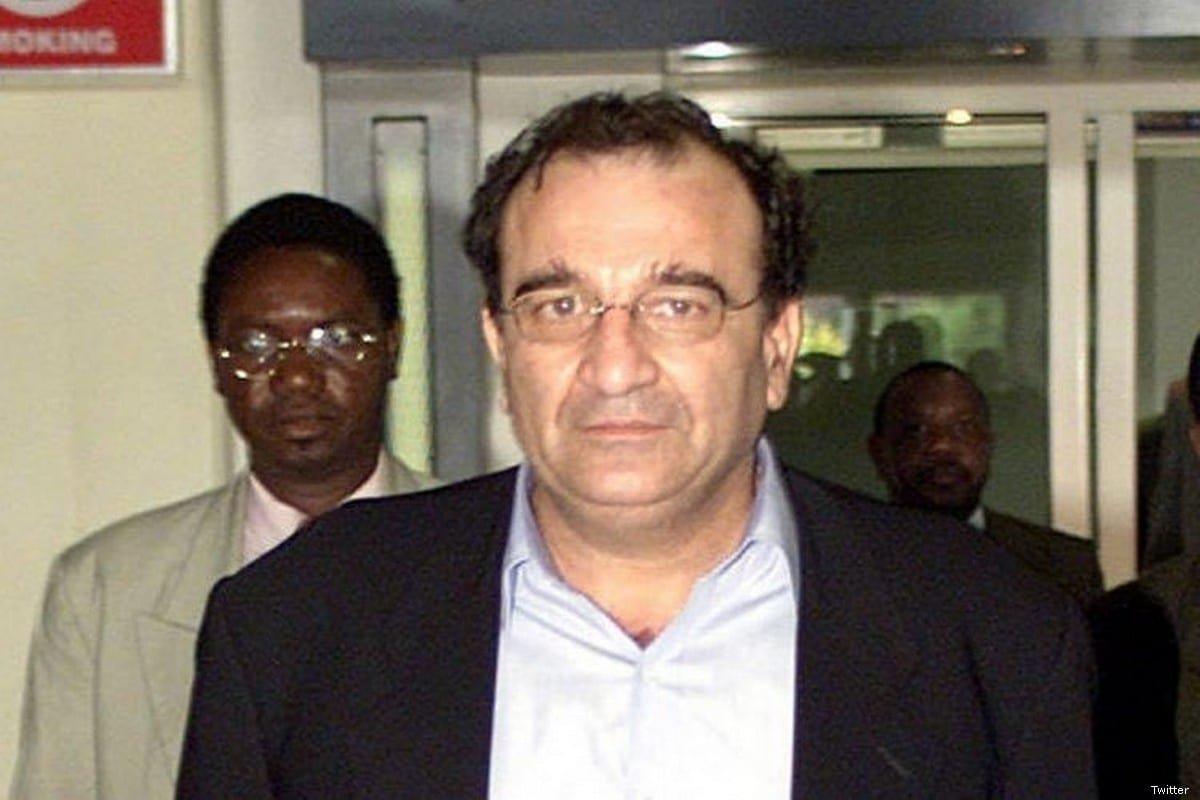
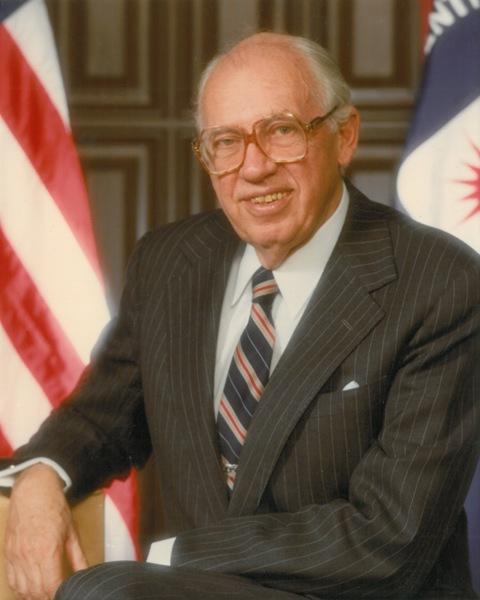
Riconosciuto laid out his allegations in a 12-page memo and presented it to the Hamiltons. How did the “bad guys” come into possession of PROMIS? Well, according to the memo, it was a gift to Earl Brian for work his firm, Hadron, had performed at the behest of Bill Casey—Reagan’s pal and soon-to-become CIA boss—in paying the Iranians $40 million as a payoff inducement to prevent the release of hostages before the 1980 Presidential election.
The Iranians made good on their word and the so-called “October Surprise” has gone down in history as playing a key role in securing Reagan a seat in the Oval Office.

The Hamiltons were eager to tell any journalist—freelance or otherwise—their tale of on-going woe. In the summer of 1990 Casolaro connected via a contact embedded in the uber-crazy Lyndon LaRouche cultists (who claimed their own intelligence operation with alleged contacts in the administration).[3]
A Dangerous Obsession
Sharing the Riconosciuto memo with Casolaro was like sprinkling proverbial catnip on a feisty feline.
In Ron Rosenbaum’s words, from his Vanity Fair piece: “The moment he got his hands on that maddening memo, with its maze of illusion and reality, was the moment Danny’s life changed and he began his descent into the obsession that would lead to his death. He was slowly, then rapidly, sucked into a kind of covert-ops version of Dungeons & Dragons, with that memo as his guide and Michael Riconosciuto as his Dungeon Master.”
Then, another key “source” for Casolaro’s snooping emerged from the woodwork … His nickname? Clark Gable; in reality, Robert Booth Nichols (no relation to John Philip Nichols), and the Hamiltons learned from Reconisciuto that he was another Cabazon player with an interesting pedigree. Those who knew Nichols—like boxer/actor, Jack O’Halloran—described him as a real-life Jason Bourne, undertaking risky missions worldwide at the behest of the CIA.5

Interestingly, Booth had a similar background to Casolaro: coming from an upper-class family in California where his father was a well-respected surgeon. Guy Lawson, in a 2009 feature article for New York Magazine (later to become a book), paints a picture of Nichols describing himself as a Black Ops “fixer” who knew the ins and outs of the “illuminati.”
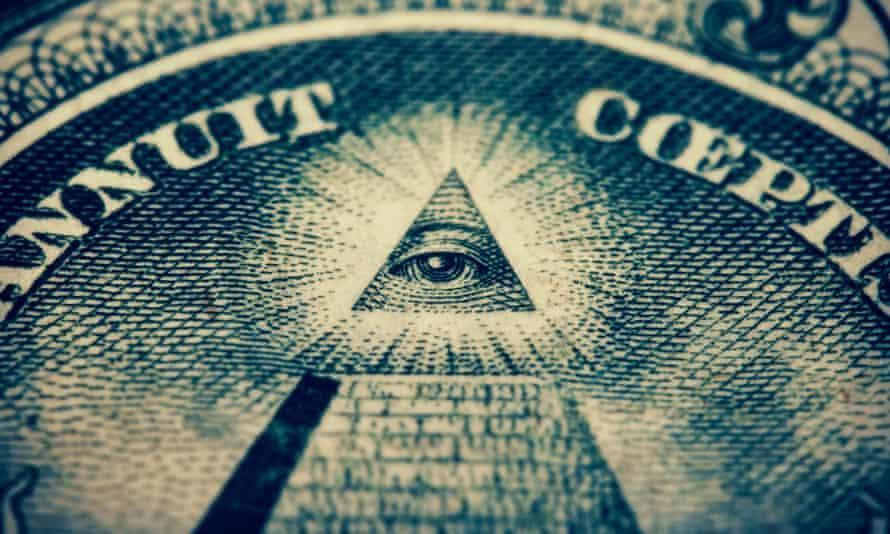
That old trope of a small number of conspiratorial types controlling global finance was a Nichols calling card. A can’t-make-this-shit-up story is an understatement and it spins out with Nichols buddying up to hapless, financier/money launderer Sam Israel, who Ponzi-ed many millions out of unsuspecting English investors in the early 2000s.
The story trajectory includes back room deals, skin-of-your-teeth encounters and hair-raising shoot-outs with Nichols brandishing Beretta pistols—James Bond style—to dispatch rival financial scammers.[4]
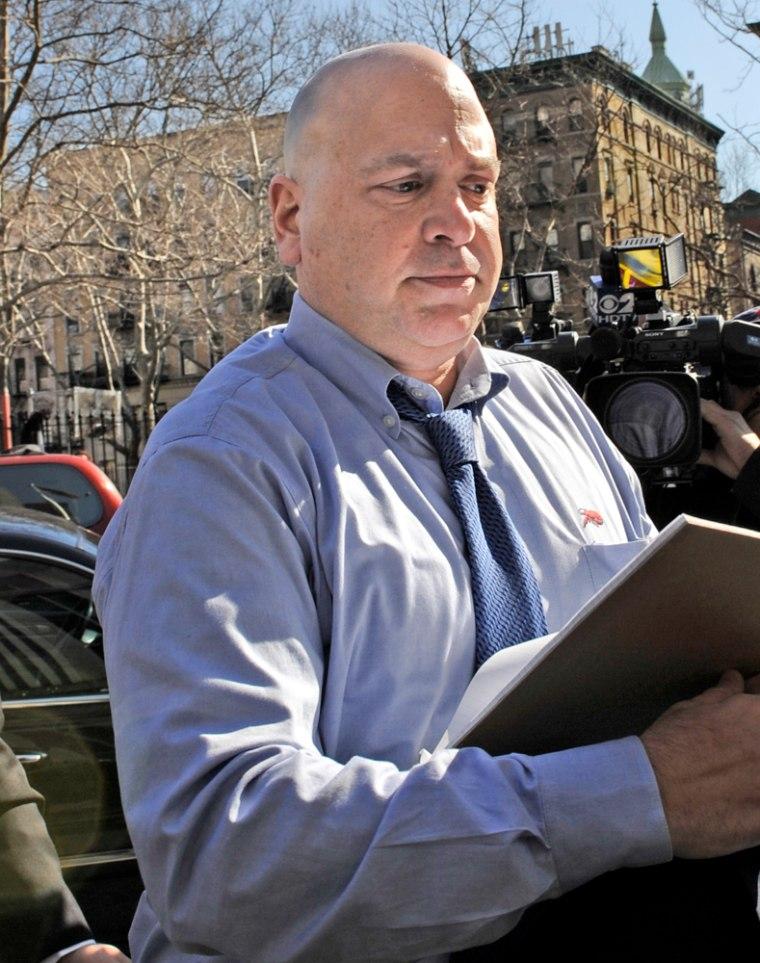
But within all this lunacy there seemed a germ of digestible truth. PROMIS, as laid out in the Lawson piece, was of interest to Sam Israel because he believed that the software had been sold to the Fed. Hence, the “back door” could be worth billions.
A light bulb went off in my head, as Israel tells Lawson … If I had PROMIS, I could track the movement of money. I could see how the Fed operated. If money was going into semiconductors, then I could get ahead of the market. The same for consumer goods or oil and gas … It would be the ultimate inside trade. However, the scam fell apart.
Sam Israel was busted and convicted; then he escaped, tried to fake his death but re-emerged; caught, and sent back to the slammer. Nichols escaped punishment.
Federal prosecutors in the Southern District of New York who handled the Sam Israel case deposed him but there seemed nothing that the Feds could pin on him with any degree of legal certainty.
There was no doubt, however, that Nichols did have good friends in low places, mobsters in the Japanese Yakuza and in the Gambino crime family and folks like MCA’s VP Eugene Giaquinto, whose side business was money laundering for the mob.
MCA Entertainment—which once represented actor Ronald Reagan—caught the attention of the Feds for a number of questionable financial transactions.6
From Last Circle, Carol Marshall; Robert Booth Nichols had strong ties to MCA Corporation through Eugene Giaquinto, president of MCA Corporation Home Entertainment Division; Giaquinto had been on the Board of Directors of Nichols’ corporation, MIL, Inc. (Meridian International Logistics, Inc.), and also held 10,000 shares of stock in the holding corporation.
MIL, Inc., was later investigated by the Los Angeles FBI for allegedly passing classified secrets to overseas affiliates in Japan and Australia. It is interesting that shortly afterward, the Japanese purchased MCA Corporation, one of the largest corporate purchases to take place in American history.
Casolaro’s head seemed to swim with all he’d learned and now, with two sources, his dream might become reality, that is, the idea of a book—the Octopus—that would reveal all.
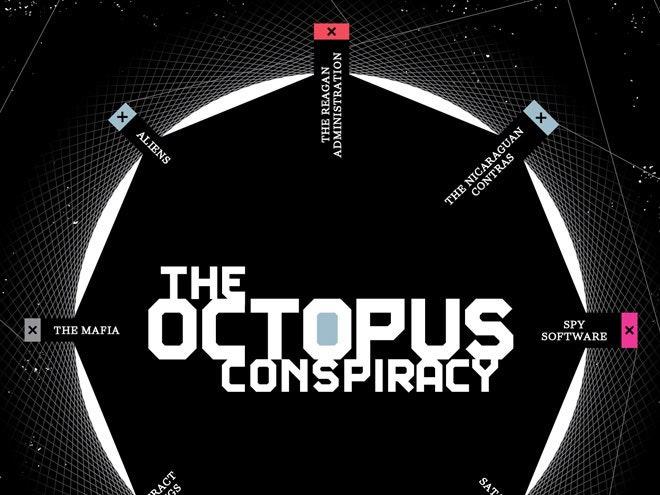
His enthusiasm was infectious among friends and family but some, like Ann Klenk—a broadcast journalist—urged caution, more because dreams of big book deals often evaporate as pipe dreams.[5]
However, the Hamiltons, in spite of Casolaro’s enthusiasm, still had not received the money awarded them by Judge George Bason in D.C. Bankruptcy Court.
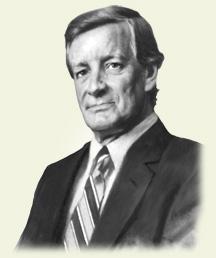
A Dirty Case
After Bason’s term expired, the Department of Justice refused to reappoint him, choosing instead S. Martin Teel, the same lawyer who represented the DOJ before Bason during the original bankruptcy proceedings. Eventually, the judgment would be thrown out on a procedural basis. The Hamiltons—no surprise—would never get their money.
After filing complaints with DOJ’s Public Integrity Section—and getting no response—the Senate Permanent Subcommittee on Investigations started its own investigation in April 1988 but investigators were not encouraging. One—Ron Legrand—let the Hamiltons know that his source was telling him that [the Hamiltons] “don’t know squat about how dirty the Inslaw case really is; a lot dirtier for the Department of Justice than Watergate was … and DOJ has been compromised at every level.”
Eventually, the Senate Subcommittee issued a report in September 1989, indicating that it could not find any evidence of a conspiracy but offered a caveat: Its 17-month investigation was “hampered by the Department’s [DOJ’s] lack of cooperation” and that it had found employees “who desired to speak to the subcommittee, but chose not to out of fear for their jobs.”
Knowing that only the heaviest of artillery could level the playing field the Hamiltons secured the services of former AG Elliot Richardson (yes, honest Elliot of Saturday Night Massacre, Watergate fame) to pen a letter to then AG Dick Thornburgh asking for an independent counsel to be appointed.
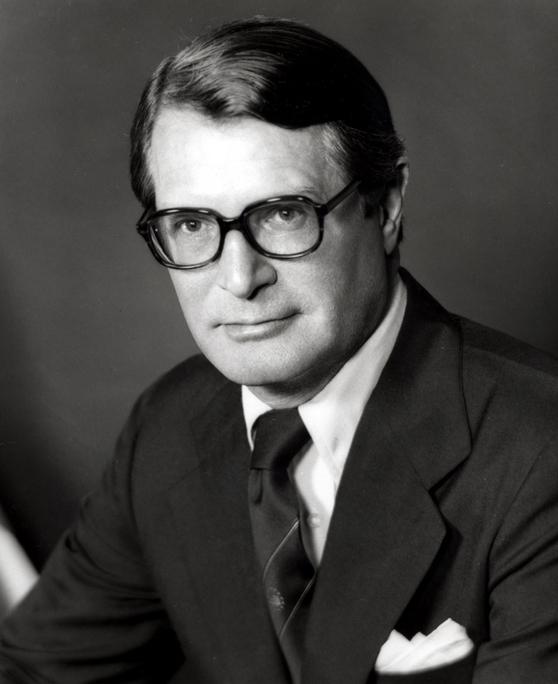
Elliot Richardson [Source: wikipedia.org] 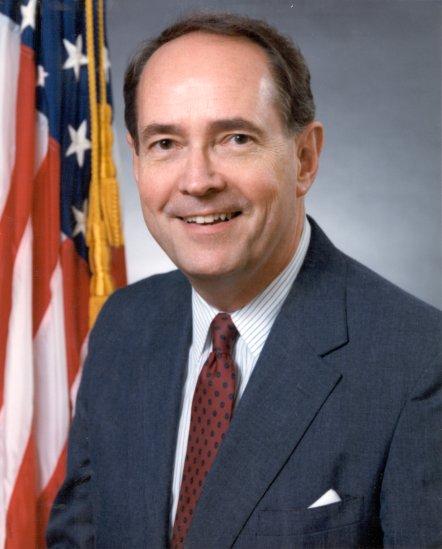
Dick Thornburgh [Source: wikipedia.org]
Thornburgh—who followed Ed Meese as Reagan’s Attorney General—took a hard and fast position that no further investigation was warranted.
August 1989: The House Judiciary Committee began to look into the Inslaw matter. This investigation was overseen by hard-charging Texas Democratic Congressman Jack Brooks, and his investigators began to kick over heavy rocks; casting a very wide net.
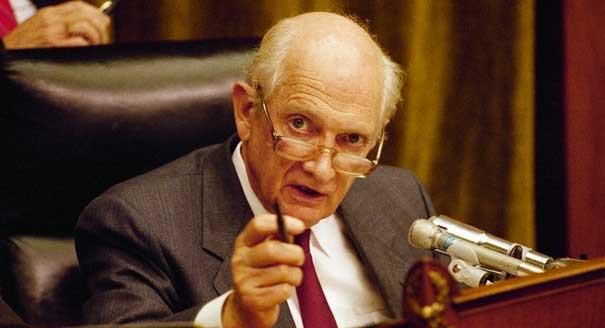
In March 1991 Riconosciuto provided the committee with an affidavit detailing his involvement with Cabazon, Earl Brian and Wackenhut but also claimed that he was threatened by Peter Videnieks, DOJ’s contract officer, the same official responsible for withholding PROMIS payments to the Hamiltons.
A little more than a week after giving his deposition Riconosciuto was busted by the DEA for alleged narcotics distribution. He provided a sworn statement to House investigators claiming that arresting officers had confiscated a tape recording of a conversation with Videnieks. DOJ prevented House Committee investigators from interviewing the arresting officers or obtaining seized materials.

The plot thickened. In July 1991, the House Committee issued a subpoena to AG Thornburgh to produce any withheld Inslaw documents. They also asked him to appear before the Committee to answer questions related to DOJ’s culpability in the PROMIS affair. He produced some documents but claimed that a number of key documents were “missing.”
Thornburgh refused to appear before the Committee.
On to Something Big
It was around this time that Casolaro started fielding a barrage of calls from Riconosciuto, reiterating his claims that the bust was retaliation for his whistle blowing.
Casolaro was pumped; he felt he was on to something big—really, really big—a career maker.
He had also seen other clues: copies of checks drawn on BCCI accounts held by Saudi businessman Adnan Khashoggi and Iranian arms dealer Manucher Ghorbanifar— middlemen for the cash pipeline to the Iranians as part of the Iran-Contra Affair.
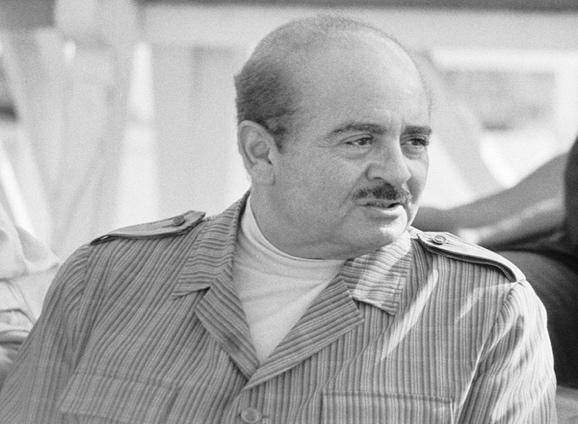
Adnan Khashoggi [Source: wikipedia.org] 
Manucher Ghorbanifar [Source: artsandculture.google.com]
All this was breathing new life into the “Octopus.” Casolaro was certain his revelations would implicate BCCI’s involvement in everything from money laundering and arms trafficking to the sale of nuclear technology and the illicit purchase of banks and real estate.[6]
Casolaro needed to touch base with some people in Martinsburg, West Virginia; one, a former employee of a major defense contractor—William Turner—claimed to have documentation related to PROMIS and Cabazon.
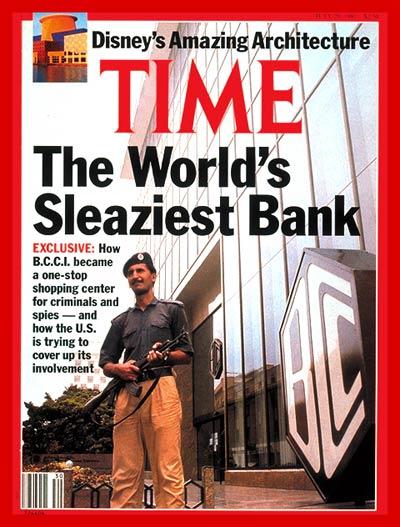
While prepping for the trip his housekeeper saw him shove a sheaf of documents into a briefcase. Casolaro seemed cognizant of the danger and let his younger brother Tony—a doctor—know that he had been receiving death threats. His housekeeper had fielded several of these calls; with one intoning, “I will cut up his body and throw it to the sharks.”
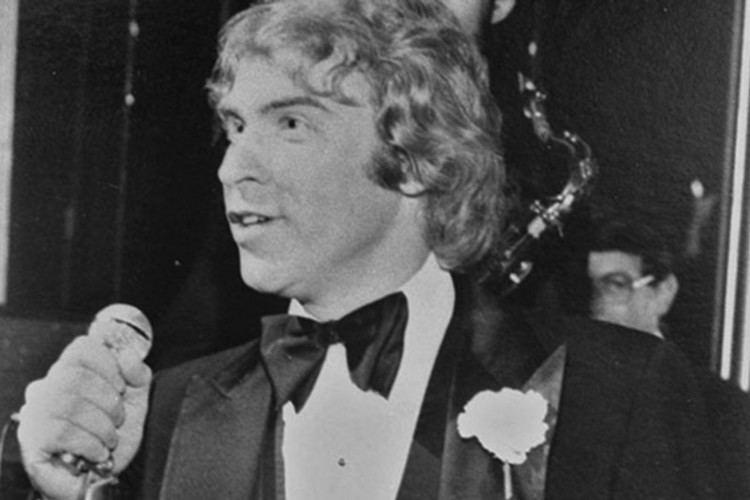
The day after he checked in—on August 8th—there were reports that he was seen with a “Middle-Eastern-looking man” later identified as Hassan Ibrahim, an Iraqi arms dealer.
Evidence Points to Murder
August 10th, 1991, Sheraton Hotel, Room 517: around 12:30 PM, the housekeeping staff was treated to a gruesome and bloody scene.
Casolaro was slumped in the bathtub, covered in blood. There were deep cuts on both wrists. A police investigation quickly wrapped up with what seemed like the obvious conclusion: suicide. A “note” was found that read “To my loved ones, please forgive me—most especially my son—and be understanding, God will let me in.”

It seemed like an open and shut case. The County Coroner didn’t even bother doing an autopsy; quickly embalming the body. But Casolaro’s family and friends—shocked—thought differently.
John Connolly—the ex-NYPD homicide detective turned journalist—also had his suspicions laying out his thoughts in a 1993 Spy Magazine piece titled, Dead Right: He wrote: “It looked like somebody threw the towels on the floor to wipe the blood up … adding, this man cut really deeply, down to the tendons. That’s significant. That’s unusual.”
The cuts were more like slashes and hacks. The police did seem baffled at the severity; usually suicide victims are more tentative about how they go about ending it all. Danny’s family also noted that he was afraid of blood tests and needles, so they felt that it unlikely that he would commit suicide by slashing his wrists.
And then there were the documents that Casolaro had brought down with him.
They had disappeared along with anything, presumably, he may have been given by unidentified individuals.
On August 15th, Casolaro was laid to rest and—to quote Alice in Wonderland—things just got curiouser and curiouser. A bevy of good-looking blondes stood by as the coffin was prepared for its final journey. Toward the end of the service a highly decorated military officer arrived, walked over to the grave, saluted and placed a medal atop the casket before it was lowered.
No one in attendance had any idea who this individual was. Danny had never served in the military.
Ann Klenk—Danny’s longtime friend—later mused about this mysterious visit: “We went back to Frances’s house, Danny’s mother’s house, and I said, ‘Frances, who was the military man?’ And she said, ‘I thought you’d know.’ And we asked everyone there. There had to be fifty people at Frances’s house. No one knew who they were. No one.”

So now there was no Danny Casolaro and no clear explanation of his demise but, that said, there has not been any shortage of speculation: Suicide or murder (or weirdly, perhaps both)?
Jim Ridgeway did find a credible argument for suicide. Casolaro had told friends that he might be in the early stages of MS. That, coupled with a revelation that the “Octopus”—as a book—might never come to fruition (and he was not destined to become an Ernest Hemingway, his favorite author) might have pushed him over the edge.
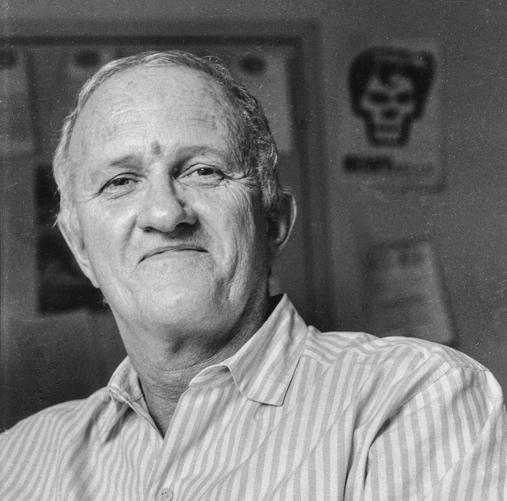
Murder most foul? Sure … Perhaps the military farewell at his funeral was a sardonic and sarcastic wave-off from some of his notorious and no doubt relieved acquaintances. John Connolly, obsessed by the case, contacted a senior investigator for the House Judiciary Committee.
In turn, the investigator penned this note for his files: “Today, I was contacted by John Connolly, a former New York Police Department homicide detective who is now an investigative journalist. Based on earlier conversations with Connolly, I am aware he is investigating the death of Danny Casolaro.”
Connolly shot holes in the suicide story.
The maid who first found the body told him that she had located and pointed out to the police two blood-soaked towels that had been stuffed under the sink in Casolaro’s hotel bathroom. The maid told Connolly that it was obvious someone had used the towels to wipe up blood from the tile on the bathroom floor.
The maid further stated that, when she went into the room, the wiped-up blood was still visible on the floor. Connolly said that this fact had never been reported or acknowledged by the Martinsburg Police Department, and that it would have been physically impossible for Casolaro to have slit his wrists, wiped up the blood from the bathroom floor, stuff the towels under the bathroom sink, and then get in the bathtub and bleed to death.
There was even a theory that his suicide was scripted by him and designed to create the kind of speculation that would eventually take down the Octopus. Hard to believe, but even the state’s medical examiner, Dr. James Frost, was quoted in The New York Times as believing “it appeared a suicide, but could not rule out foul play.”

The House Judiciary Committee released its report in early August, 1992, and it immediately caught the attention of the mainstream press. The New York Times labeled the House report as the “thriller from Washington,” citing a compelling section:
“Daniel Casolaro’s investigation into the INSLAW affair my have wittingly or unwittingly brought him into contact with dangerous covert intelligence operatives and individuals associated with organized crime. As a result, further investigation into the circumstances surrounding his death is needed.”
Interestingly, in November 1991—per the House Committee’s recommendation—then Attorney General William Barr (yes, that one)—appointed a Special Counsel to conduct a “top to bottom” review of the Inslaw case.
A retired judge, Nicholas Bua, was given the task and, in March 1993, he issued a 267-page report. He found no credible evidence to support the Hamiltons’ allegations; pretty much the report was a whitewash of the entire Inslaw affair.
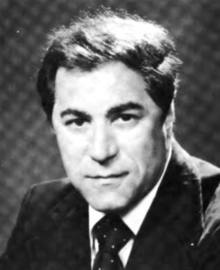
Nicholas Bua [Source: wikipedia.org] 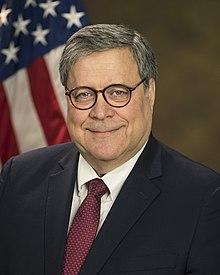
William Barr [Source: wikipedia.org]
Unsolved Mystery
The mystery of Casolaro’s death remains just that and with so many moving parts the pieces that would re-animate the Octopus remain to be discovered. As Jim Ridgeway pointed out in a 1991 Village Voice piece co-written with Keith Campbell—“The Arms of the Octopus”—there is a greater meaning of it all, that is, the tentacles of Danny Casolaro’s Octopus reach farther back into American history, writing:
“President Jack Kennedy understood that the war in Vietnam could not be won by any traditional means of warfare. If the United States were to succeed in the new Third World Wars, it would have to learn once again to fight and win guerrilla wars. During the next two decades the national security state created an irregular army of mercenaries and spies, sort of a rear guard, to fight those battles.”
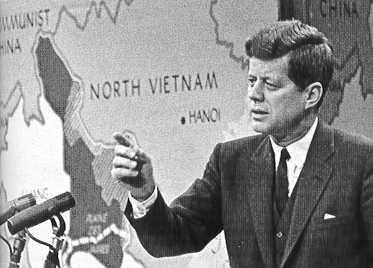
While this new style of covert warfare evolved abroad, there was a new sort of guerrilla warfare going on at home as well.
Ever since J. Edgar Hoover built the FBI into a centralized police apparatus during the early part of the 20th century, the United States had accepted the necessity of a federal political police. Hoover did not just spy on anarchists and communists; he also showered his attention on federal judges and members of Congress.
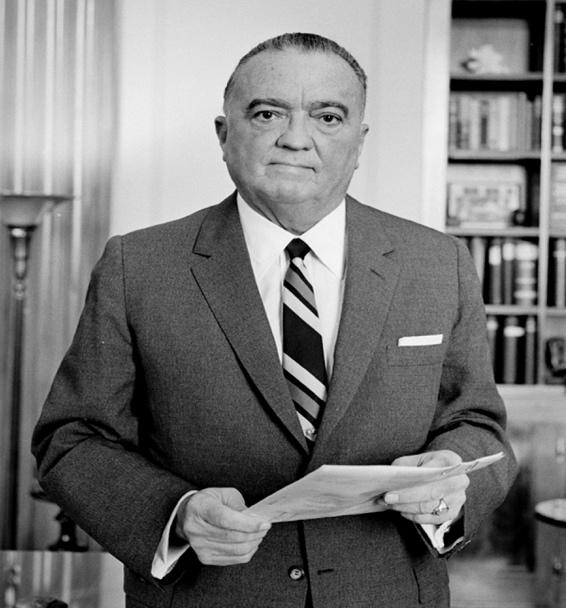
He concocted plans to ruin Martin Luther King, Jr., and to disrupt the activities of various Black Power groups and worked hard to scuttle the New Left. In the 1960s, the FBI was joined by units of military intelligence and the Central Intelligence Agency.
These police agencies viewed dissent in America as a political insurgency, and they sought to meet it with a campaign of counter-insurgency.
Among the most prominent proponents of this underground ideological struggle were the new governor of California, Ronald Reagan, and his chief law enforcement aide, Ed Meese.”
Although time has warped this analysis to some degree, the greater meaning of the Octopus points in many directions with contemporary resonance.
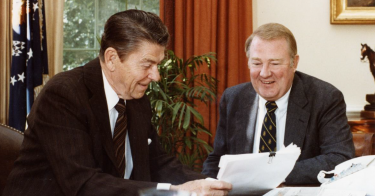
There are well-funded secretive individuals with arms and mercenary armies at their disposal who seek to undermine basic rights and subvert gullible populations to their own ends. Think U.S.-based Blackwater or the Russian Wagner Group.
The Inslaw affair provides a baseline in understanding how computer software became weaponized and the immense financial stakes involved.
PROMIS presaged an era that has brought with it the promise of less privacy and more enhanced surveillance; whether it is the controversy over the Israeli NSO group which provides global “hacking for hire” or the Solar Winds hackers who breached—ironically—the e-mail accounts of 30 US attorneys’ offices (think PROMIS).
It is the 30th anniversary of Casolaro’s untimely death and, despite the speculation and investigation, it is still a “cold case.” There are scant few players around who participated in the drama but one, William Barr, is still here. And we should not forget the mysterious Robert Booth Nichols, Inslaw’s own “Jason Bourne.” He seems to have disappeared amid questionable reports of his “death” in 2009.
See Jack Colhoun’s previous reporting on Danny Casolaro’s case: Declassified Documents Call Into Question Official Washington Narrative of Danny Casolaro’s Death

-
Full Disclosure: Both my Pacific Street Films co-principal — Steven Fischler—and I have had an early connection with this story. The late Village Voice reporter, Jim Ridgeway, was a friend and contact with whom we exchanged information regarding the Casolaro affair. Another government source — involved in the original investigation — also supplied valuable background on the case. ↑
-
Ben-Menashe currently works as a Montreal-based lobbyist. He has represented the late Zimbabwean ruler Robert Mugabe and the Somalian military. Earlier this year he was reportedly paid $2 million by the Myanmar Junta to “assist in explaining the real situation of the coup.” ↑
-
Steven Fischler—my Pacific Street Films co-principal—and I were treated to a lecture by LaRouche researchers in the mid-1970s. As producers of Red Squad (1971) a well-received documentary investigation of the NYPD’s surveillance division, we had been on their radar screen. However, an hour’s worth of diatribes highlighting a global conspiracy directed by Queen Elizabeth and Winston Churchill, was enough to have us high-tail it out of the office and hope that said researchers might not skip their meds. ↑
-
Nichols served as a consultant for Steven Seagal’s 1992 feature, Under Siege, where he also played the role of a Colonel Sarnac. Similarly, in Kubrick’s Full Metal Jacket, Nichols served as one of the extras in the storied Paris Island dress-down. ↑
Resume, translated as a don’t-fuck-with-me sensibility. ↑
-
In fact, after Casolaro’s death the checks seen by Casolaro turned out to be nothing new; they had been made public by the congressional committee investigating Iran-Contra in 1987. ↑
CovertAction Magazine is made possible by subscriptions, orders and donations from readers like you.
Blow the Whistle on U.S. Imperialism
Click the whistle and donate
When you donate to CovertAction Magazine, you are supporting investigative journalism. Your contributions go directly to supporting the development, production, editing, and dissemination of the Magazine.
CovertAction Magazine does not receive corporate or government sponsorship. Yet, we hold a steadfast commitment to providing compensation for writers, editorial and technical support. Your support helps facilitate this compensation as well as increase the caliber of this work.
Please make a donation by clicking on the donate logo above and enter the amount and your credit or debit card information.
CovertAction Institute, Inc. (CAI) is a 501(c)(3) non-profit organization and your gift is tax-deductible for federal income purposes. CAI’s tax-exempt ID number is 87-2461683.
We sincerely thank you for your support.
Disclaimer: The contents of this article are the sole responsibility of the author(s). CovertAction Institute, Inc. (CAI), including its Board of Directors (BD), Editorial Board (EB), Advisory Board (AB), staff, volunteers and its projects (including CovertAction Magazine) are not responsible for any inaccurate or incorrect statement in this article. This article also does not necessarily represent the views the BD, the EB, the AB, staff, volunteers, or any members of its projects.
Differing viewpoints: CAM publishes articles with differing viewpoints in an effort to nurture vibrant debate and thoughtful critical analysis. Feel free to comment on the articles in the comment section and/or send your letters to the Editors, which we will publish in the Letters column.
Copyrighted Material: This web site may contain copyrighted material the use of which has not always been specifically authorized by the copyright owner. As a not-for-profit charitable organization incorporated in the State of New York, we are making such material available in an effort to advance the understanding of humanity’s problems and hopefully to help find solutions for those problems. We believe this constitutes a ‘fair use’ of any such copyrighted material as provided for in section 107 of the US Copyright Law. You can read more about ‘fair use’ and US Copyright Law at the Legal Information Institute of Cornell Law School.
Republishing: CovertAction Magazine (CAM) grants permission to cross-post CAM articles on not-for-profit community internet sites as long as the source is acknowledged together with a hyperlink to the original CovertAction Magazine article. Also, kindly let us know at info@CovertActionMagazine.com. For publication of CAM articles in print or other forms including commercial internet sites, contact: info@CovertActionMagazine.com.
By using this site, you agree to these terms above.
About the Author

Joel Sucher is a co-founder of Pacific Street Films (together with Steven Fischler) and has written for a number of platforms including American Banker, In These Times, Huffington Post and Observer.com.
Joel can be reached at Pacific Street Films.

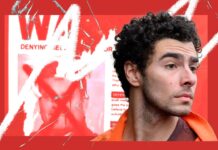
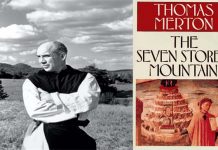
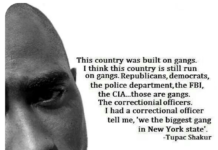
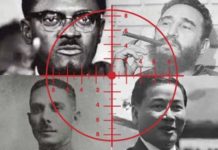
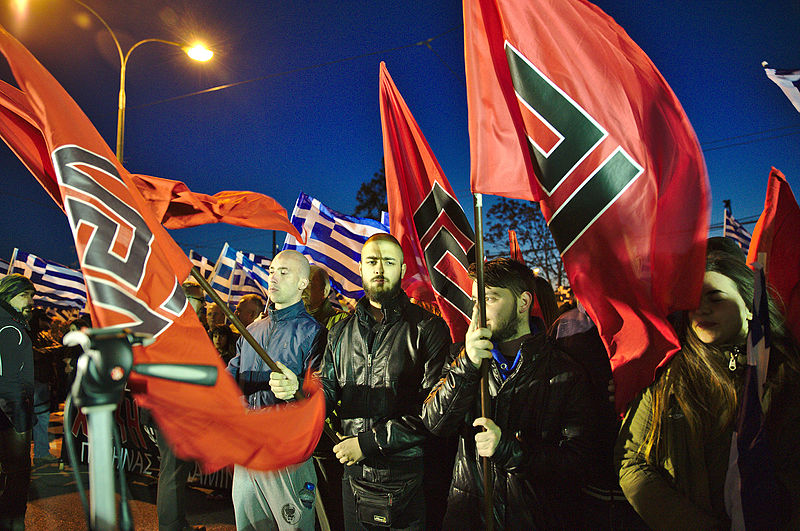

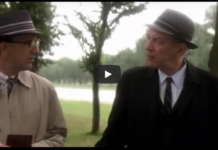



Rarely even mentioned was the statement Danny made to his sibling about a secret unacknowledged special access program development that he had become aware of through his investigation. He believed he had been targeted by a stranger than fiction agency “creature” able to deliver or somehow deposit a wide variety of diseases, specifically multiple sclerosis, and he had become sure this technology had been perpetrated against him.
[…] The mysterious case of Danny Casolaro. “’Daniel Casolaro’s investigation into the INSLAW affair my have wittingly or unwittingly brought him into contact with dangerous covert intelligence operatives and individuals associated with organized crime. As a result, further investigation into the circumstances surrounding his death is needed.’ …. There are scant few players around who participated in the drama but one, William Barr, is still here.” https://covertactionmagazine.com/2021/10/10/the-octopus-lives-how-danny-casolaros-suicide-foreshadow… […]
I’ve heard shows from Bonnie Faulkner guns & butter when they’d still aired it re this P mis
Of course it’s more than I can understand but I know the digitization of everything is way bad news
If cash goes away it’s that much easier to steal value
It is spooky to see everything empty and abandoned round the city
Where did everything and everyone go?
[…] How Danny Casolaro’s “Suicide” Foreshadowed Our Current Dystopia, by Joel Sucher […]